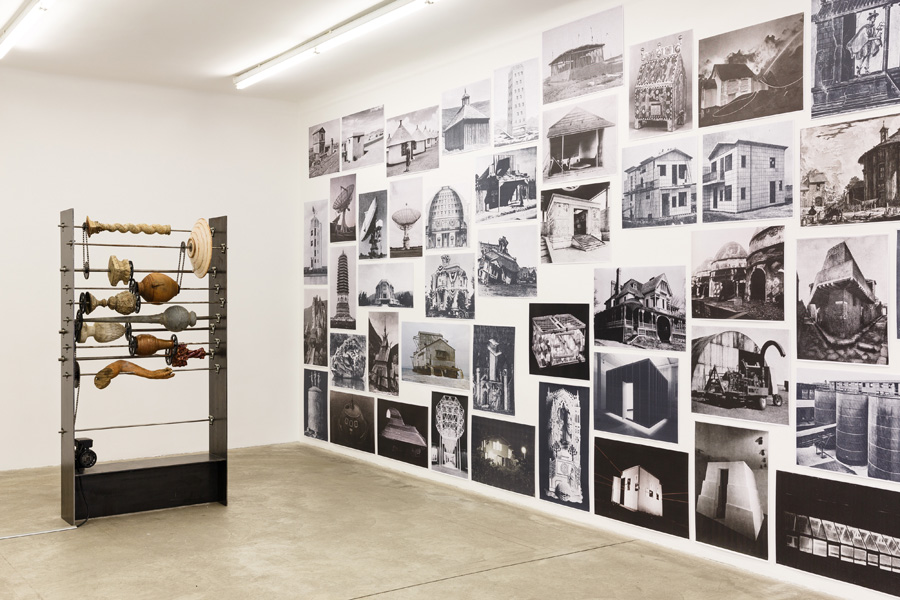curated_by Viennaline: Other Gallery-Shares Take Note
Vienna’s annual gallery-share event provides further evidence that Europe’s smaller capitals are sustaining the most energetic artistic communities
Vienna’s annual gallery-share event provides further evidence that Europe’s smaller capitals are sustaining the most energetic artistic communities

The year 2000 was decisive for Austria. The unthinkable happened as Nazi-sympathiser and xenophobe Jörg Haider and his far-right Freedom Party (FPÖ) formed a coalition government in parliament. That June, the German theatre director Christoph Schlingensief performed at Vienna’s Festwochen festival. For his explosive incitement, Bitte Liebt Österreich (Please Love Austria, 2000), Schlingensief recruited 12 asylum seekers to live in shipping containers installed beside the Vienna Opera House for six days under CCTV surveillance. Vienna residents were invited to ‘vote off’ the migrants, who would then be deported to their home countries, with the remaining winner awarded a cash prize and naturalization. With its borderline ethics, it’s hard to imagine the action coming to pass today. But then, few would have expected FPÖ to again form part of a coalition government, as it did last year.
Schlingensief’s action is currently documented at Vienna’s Galerie Crone, where a feisty, broad show about political polarization is part of the city’s annual gallery event, ‘curated by_’. Now in its tenth year, ‘curated by’ sees each of its 21 participating galleries host an external curator. Whereas in past editions, overcomplex themes were presided over by a lead curator (2014’s was ‘The Century of the Bed’), this year simplifies the event. With the event self-organized by the galleries, there’s no main curator and the theme is non-fussy: Vienna. Looking to the applied arts, contemporary political acridity and the city’s high-modernist literature, ‘curated by_Viennale’ stands out for consistent quality and range. Rare among gallery-week and gallery-share events today, we see exhibitions, not suitcase shows or showrooms. Other cities, take note.

Many exhibitions looked to the city’s 20th-century literary precedents, whose existential anguish presaged or reacted to Europe’s political disasters. At Galerie Krinzinger, the writing of ill-fated Austrian poet Ingeborg Bachmann serves as a lodestar, responded to by works by Monica Bonvicini, Mircea Cantor and Mika Rottenberg, amongst others. At Croy Nielsen, an idiosyncratic patchwork of artists draw upon W.G. Sebald’s Vertigo (1990) and its literary excavation of Franz Kafka’s death in nearby Kierling. US artist Tony Cokes shows a new three-part video installation at Galerie Nathalie Halgland, which remixes textual descriptions of the city’s nightclubs with those of Viennese artistic and political events (Kierling is invoked). Sampled on one screen is a letter from outgoing Kunsthalle Wien director Nicolaus Schafhausen, in which he blames the resurgence of nationalist politics in Austria for his resignation. Around the time the show opened, Austria’s minister for culture was seen at Galerie Emmanuel Layr, taking a selfie underneath a Merlin Carpenter work that states: ‘Not Doing a Show in FPÖ Austria’.
At Galerie Hubert Winter, Francesco Gennari’s delightfully strange mounted pencil drawings accompany Simone Fattal’s chthonic, quasi-abstract sculptures recalling mauled lions, warriors and shelters. Vienna’s much-mythologized, insular 1980s is celebrated at Galerie Elisabeth and Klaus Thoman, where inebriation, in-fighting, actionism and postmodern furniture design are recounted vividly through works by John M. Armleder, Bruno Gironcoli, Birgit Jürgenssen and Walter Pichler. This male-dominated lineage is rebuffed in ‘Konkret-Frau’ (Concrete Woman) at Galerie Steinek, which looks to mid-century female artists working in geometrical abstraction. Large works on paper by Beverly Piersol (‘10’, 1991–96) and subtle, abstract photographs by Inge Dick and Dóra Maurer (3 Polaroids weiss, 13.6.1996, 1996) are anchored by the poems of Eugen Gomringer.

Concrete poems and collages also flourish at Galerie Christine König, in an impassioned presentation uniting writing, sound and performance (curated by Daniel Muzyczuk) that can only be called poetic. Half a century ago in Vienna, collage, poetry, music and actions were explored by the city’s Wiener Gruppe, which included poet Gerhard Rühm; this presentation finds a continuity between Rühm and the visual poetry of a younger cohort: Félicia Atkinson, David Grubbs and Susan Howe. During a solo guitar performance and reading, Grubbs asked: ‘What’s shared time?’, as if answering his own question.
A tight show at Martin Janda (curated by Latitudes) centres around a 1910 aphorism from the Viennese feuilletonist Karl Kraus: ‘two strains of intellectual vulgarity: defenselessness against content and defenselessness against form’. Kraus had in mind art’s instrumentalization by content, on the one hand, and ornament, on the other. Here, Sean Lynch explores typological symbolism and stonecraft in film and photography, while in David Bestué’s churning, grinding machine, Mecanismo (Mechanism, 2017), cast bodies and furniture parts rotate on a diabolical-looking skewer. On one wall, Batia Suter’s photographic ‘Shelter Series’ (2018) stakes out a typology of shelters. The neat, taut presentation tiptoes around Kraus’s question: ‘In which hell would the artist prefer to fry?’

Perhaps neither. While this year’s theme may have risked introspection, the shows gave me a far better run for my time than the blandly commercial gallery-week events I’ve endured elsewhere. Strange as it may sound, it’s clearer than ever that, today, smaller capitals such as Madrid, Vienna and Warsaw are sustaining the most active – and energetic – artistic communities in Europe. (Consider that the galleries Croy Nielsen and Exile have decamped now-stagnant Berlin for greener pastures in Vienna.) Whether regionalization and interiorization can sustain artistic flourishing for long is another question, as is the politics of insularity that might underpin such developments. But, for now, it works.
curated_by Viennaline, featuring 21 Viennese galleries paired with international curators, runs until 13 October 2018.
Main image: Gerhard Rühm, aufwallung, 2007, collage and pencil on thin cardboard, 40 × 30 cm. Courtesy: the artist and Galerie Christine König, Vienna






















